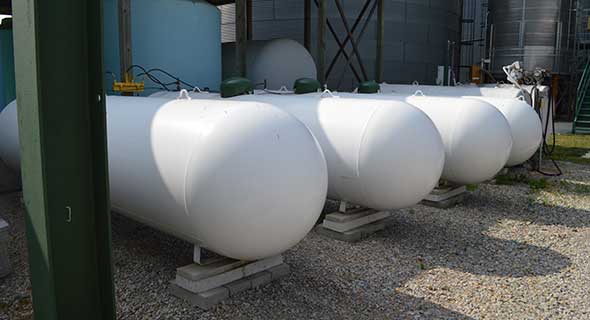Understanding underground tank installation techniques
The installation of underground American Society of Mechanical Engineers (ASME) propane tanks plays a huge role in the industry here in the Northeast.
More than 70 percent of our horizontal propane tank installations are underground, with the majority of those supplying central heating systems. The continued rise in new construction has significantly increased the demand for underground propane tanks, bringing installations to an all-time high. Understanding the advantages, disadvantages and proper installation techniques can help companies protect their investment for many years.
Building contractors play a huge role in these installations. The relationship and communication with the builders tend to be the most important parts of the installation process.
The contractor usually has heavy digging equipment on-site during home construction and does not typically like equipment sitting around. Our office or sales representative usually gets the builder’s call looking for the tank’s installation with short notice – the next day or the following day. Depending on necessary town permits, we can usually make this happen. However, meeting with these contractors prior to the tank set is crucial to helping the licensed technician perform the job safely, efficiently and to meet all state and local codes.
Going underground
There are many advantages to the customer choosing underground tanks versus aboveground tanks.
One main advantage is the protection from extreme weather conditions, whereas aboveground tanks are exposed to elements like rain, snow, sleet, wind and sun on a daily basis. These weather elements could cause rust, paint peeling and corrosion. Underground tanks are also hidden, which makes the customer feel safe and secure. In the customer’s eyes, aboveground tanks can be considered high maintenance.
There are also some disadvantages of having a steel tank in the ground. The earth has a natural electrical current that causes electrolysis. Electrolysis can cause damage to steel when a tank is not properly protected.
Depending on the tank size, we use at least one sacrificial anode bag to protect the propane tank. This bag diverts the electrolysis from the tank and acts as an electrical decoy. This protects the tank from corrosion and, in most cases, will keep the tank looking new, even buried in the ground for many years. Underground tanks can be easy to maintain if properly installed, but remember it’s not easy to swap one out like we do with aboveground tanks.
Technician’s role
The technician performing the install is the first line of defense to ensure the tank can uphold its integrity.
Making sure adequate backfill is used to cover the tank and piping will protect the tank from natural rocks in the earth. The anode bag must be properly connected to the tank, installed in the designated location, and activation using water is important.
A lot of companies have policies and procedures regarding cathodic testing for their underground tanks. (The Propane Education & Research Council has developed a great program that goes into detail on cathodic protection.) Making sure the tank has the correct voltage reading from the first install will give the company a great starting point.
The majority of these underground tanks are owned and maintained by us, the propane company. A small percentage of underground tanks are owned by the customer here in New England.
We make a huge investment when installing propane tanks, especially underground. There are many things we can do to protect our investment. During gas checks, we should test and record our readings. During deliveries, we should visibly inspect the tank for rust or corrosion.
Taking these steps will ensure the maximum lifespan of an underground tank and protect the investment made by you and your customers for many years to come.
Ryan Card is the operations manager for D.F. Richard Energy in Dover, N.H. He can be reached at rcard@dfrichard.com or 603-516-3225.


















when an underground tank is company owned what is to stop a customer from changing lp providers, causing the lp company to pay for digging up a tank? long term contracts?
You more than likely will have a contract with the company who owns the tank, for a set term. These contracts can vary greatly and it is important to read and understand them fully. They are usually not too long and a few minutes of your time can save a lot of confusion down the road.